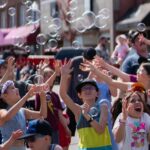Former Nelsonite and raptor expert offers insight into Osprey family
Former Nelsonite William Dove was pleased to see Nelson Hydro and Columbia Wireless joined forces to have a camera at the nest of an Kootenay Osprey family just off Highway 3A west of Nelson by Grohman Park.
Dove, who got his start as a raptor rehabilitator, educator and falconer when I lived in Nelson about 35 years ago, decided to use his expertise to take The Nelson Daily readers through the hatching process as Ospreys played a big part in peaking my interest in raptors.
Dove went on to also breed many raptor species and assist in continuing the publics’ education of raptors in the school systems of B.C., Alberta and parts of the NWT.
He currently resides near Cranbrook where his work was featured in Beautiful B.C. magazine and the C.B.C.’s On the Road Again.
See live stream.
On (Saturday) May 3rd a local Osprey pair nesting west of Nelson near Grohman Provincial Park had a single egg. Then on (Tuesday) May 6th at approximately 7:51 a.m. the female laid the pair’s second egg. Osprey eggs are a very striking combination of browns and oranges forming blotches and spots.
There colourful attractiveness made them a treasured prize of egg collectors when such a hobby was legal. Approximately 72 hours later, the normal interval between eggs laid by Osprey, a third egg was laid at 9:21 on (Friday) May 9th. Incubation begins with the first egg.
The ability to view these events by the public are thanks to ColumbiaWireless.ca and Nelson Hydro.
The cam sponsored by ColumbiaWireless.ca even has night vision capabilities if you’re a night owl.
Hydro companies have often been called upon to provide safer nesting opportunities for Osprey throughout B.C. and especially in the Kootenays, the home of one of the largest populations of breeding Osprey in the world. Normally the efforts of power companies, in this regard, goes unnoticed or unrewarded but this time there are enough rewards for all.
The public gets more reliable electric service and a front row seat into the nesting behaviour of a specialized bird of prey or raptor. The Osprey gets a safer nesting opportunity to raise their young and show the world their lives without interference from those same humans.
Often the nesting choices Osprey make cause power outages, fires and occasionally the electrocution of the Osprey.
Viewers of the cam have seen several matings; numerous fish delivered to the nest by the male and even seen him do duty incubating the three eggs in their clutch. It is however, the female (who is larger) that does the greatest share of the incubation.
Both bring nesting material and arrange its placement to form the stick nest. Bark, grasses and greenery (fresh vegetation) is also brought and used to create the inner cup that supports the eggs and the young. Ospreys also have a habit of bringing unusual objects to their nests.
So far we have not seen any unusual deliveries but bailing twine, children’s toys, and unfortunately because of the danger it might present, fishing line also finds nests and have on too many occasions resulted in a nestling death. Viewers have seen indications of interlopers (single Osprey looking for a mate or nesting opportunity) and the resulting defensive responses.
Vocalizing and chasing are the normal results. Raptors avoid physical contact with other raptors their size as to do so is risky but such confrontations do occur when necessary. With the results often being the latter part of the saying “live by the sword…”
Osprey mainly eats fish they catch from various water systems throughout the world (except Antarctica) and in this case from the West Arm of Kootenay Lake. Osprey occasionally catches small mammals, birds, and reptiles.
The ability to move their outside toes to the rear and specialized structures on the underside of their toes (called spicules) make their fish holding skills superb. Their talons are round (other raptors have grooved), strongly curved as is the beak (again greater than most other raptors allowing for tearing and twisting at strong scales and puncturing their prey’s body).
Their ability to hover, and regurgitate are other adaptations that allow them to hunt and consume fish efficiently.
This is the first instalment in what will be a weekly update on what is occurring at the nest. The eggs will hopefully hatch in about three more weeks.
This cam is an excellent opportunity for students of all ages to observe these raptors without interfering with their lives.
There is also a chat available for viewers to discuss these birds and get questions answered that come up as their lives unfold.


























Comments